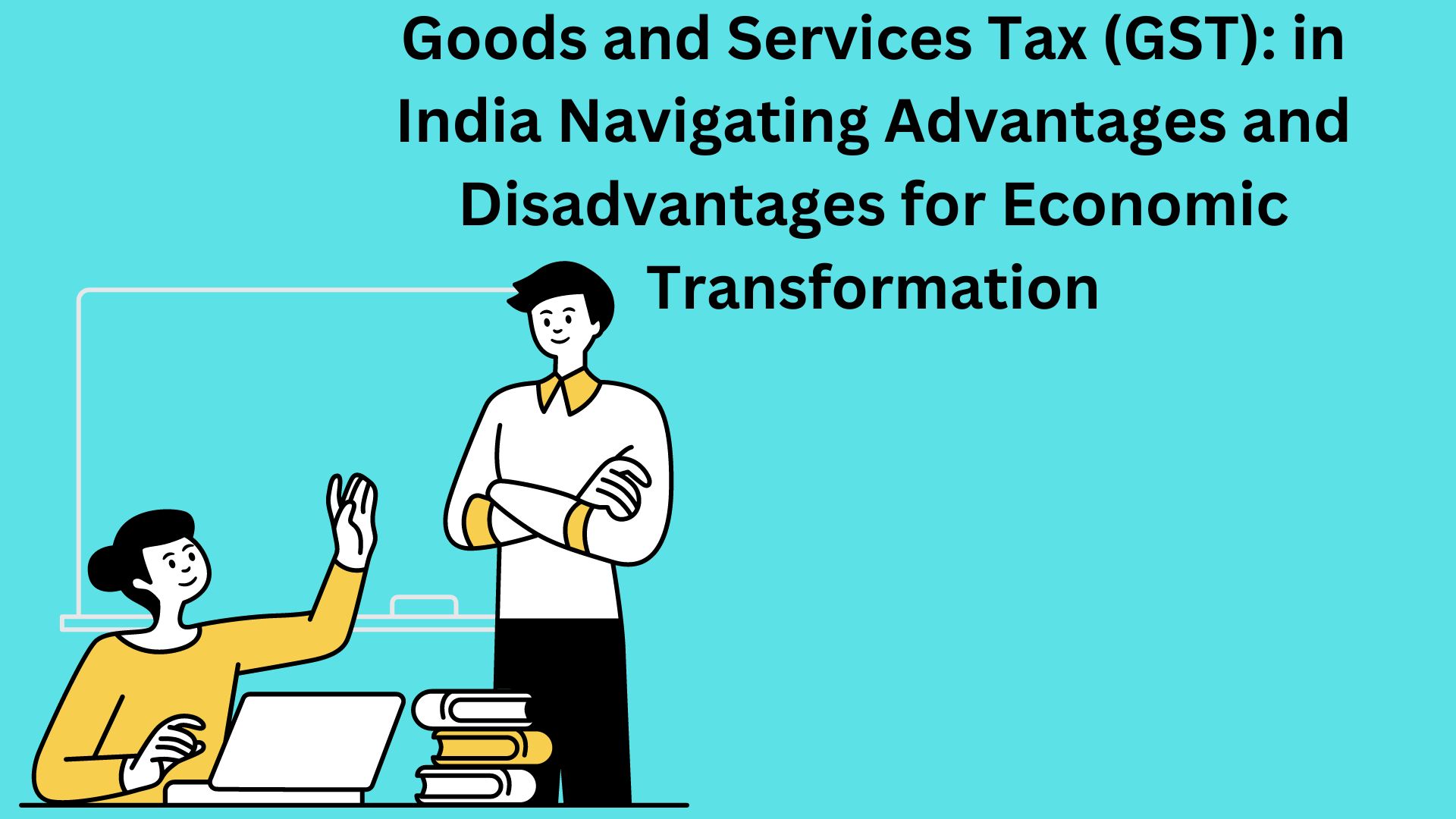Advantages of GST
Goods and Services Tax (GST) is a revolutionary tax reform that has brought about significant changes to India’s taxation system. This unified tax structure offers numerous advantages that have the potential to transform the economic landscape of the country. Here, we delve into the key advantages of GST and their implications for businesses, consumers, and the overall growth trajectory.
Simplified Tax Structure
GST replaces a complex tax structure with a unified tax regime, eliminating multiple layers of taxation such as excise, service tax, VAT, etc. This simplifies the tax system for businesses and consumers alike.
One Nation, One Tax
GST brings uniformity in taxation across states and creates a common market throughout the country. This reduces inter-state trade barriers and promotes ease of doing business.
Elimination of Cascading Taxation
GST eliminates the cascading effect of taxes by allowing businesses to claim input tax credit for taxes paid on inputs. This leads to more efficient resource allocation and cost savings.
Transparency and Compliance
The GST system is digital and requires regular online filings. This enhances transparency, reduces tax evasion, and promotes better compliance as transactions are tracked digitally.
Boost to Economic Growth
The streamlined tax structure and reduced tax burden can lead to increased consumption, investment, and overall economic growth. It can also attract foreign investment due to a simplified tax environment.
Reduced Tax Litigations
The unified tax structure minimizes disputes between the central and state governments, as well as disputes between taxpayers and tax authorities, leading to a more stable business environment.
Benefit to Consumers
GST aims to bring down the overall tax burden on consumers. Essential items are usually taxed at a lower rate, which can lead to reduced prices for goods and services.
Reduced Tax Evasion
GST’s digital tracking of transactions and the requirement for businesses to report all transactions enhance the ability of tax authorities to track and reduce tax evasion.
Boost to Manufacturing and Export
The input tax credit mechanism under GST benefits manufacturing industries, as they can claim credit for taxes paid on raw materials, reducing the cost of production. This can make Indian goods more competitive globally.
Efficient Supply Chain
GST facilitates the seamless movement of goods across state borders by eliminating the need for multiple checkpoints and entry taxes. This leads to smoother logistics and reduced transportation time and costs.
Increase in Government Revenue
GST expands the tax base by including more sectors and reducing exemptions. This can lead to increased tax revenue for the government, which can be used for public welfare and development projects.
Unified Market
GST removes the concept of “tax on tax,” which existed under the previous tax regime. This creates a level playing field for businesses across states and reduces market distortions.
Disadvantages of GST
Goods and Services Tax (GST) has undoubtedly brought about significant changes in India’s tax regime, aiming for simplification, transparency, and economic growth. However, like any substantial reform, GST is not without its share of challenges. In this exploration, we delve into the disadvantages of GST and the potential implications for various stakeholders.
Initial Disruption
Transitioning to the GST regime can be challenging for businesses, especially small ones, due to changes in processes, technology adoption, and understanding of the new tax rules.
Complexity
While GST aims to simplify taxation, it still involves multiple tax rates, exemption lists, and classification challenges. This complexity can be confusing for businesses to navigate.
Technology Dependence
The successful implementation of GST requires reliable and robust technological infrastructure. Small businesses might face difficulties in adopting the necessary digital tools.
Impact on Small Businesses
Small-scale businesses might find it burdensome to comply with the GST regulations, impacting their competitiveness and financial stability.
Inflationary Pressures
During the initial stages of implementation, some sectors might experience inflationary pressures as businesses adjust to the new tax rates and input credits.
Disproportionate Impact on Certain Sectors
Certain sectors, especially services, might face higher tax rates under GST, impacting their profitability and growth.
Complex Tax Rate Structure
The multiple tax rates for different goods and services can be confusing and may lead to classification disputes between businesses and tax authorities.
Compliance Burden
GST compliance requires businesses to file multiple returns and maintain accurate records. Small businesses with limited resources might find it challenging to fulfill these requirements.
Changes in Business Processes
Organizations need to adapt their accounting, invoicing, and reporting processes to align with the new GST regulations, which could lead to initial operational challenges.
Rate Rationalization Challenges
Deciding appropriate tax rates for various goods and services can be complex and subjective. Frequent changes in tax rates can create confusion and operational difficulties for businesses.
Impact on Real Estate
Under the GST regime, real estate transactions are subject to a high tax rate. This can lead to increased costs for homebuyers and may impact the real estate sector.
State Autonomy
Some states might experience a reduction in their fiscal autonomy due to the centralized nature of GST. This can lead to disparities in revenue distribution among states.
Digital Divide
While GST promotes digitalization, there might be segments of the population, particularly in rural areas, that lack access to technology and may struggle to comply with the digital filing requirements.
Implementation Challenges
The success of GST hinges on effective coordination between the central and state governments. Delays or disagreements in policy decisions could affect its smooth implementation.
Also read: GST – Advantages & Disadvantages
Conclusion
In conclusion, the journey with GST is an evolving one. The advantages it brings, such as a unified market, increased compliance, and streamlined taxation, provide a strong foundation for economic growth and development. Simultaneously, addressing the disadvantages, such as complexity, compliance burden, and the need for continuous rate rationalization, requires ongoing commitment from policymakers and businesses alike. By acknowledging the challenges and building on the strengths, India can harness the transformative potential of GST for sustained progress and prosperity.




